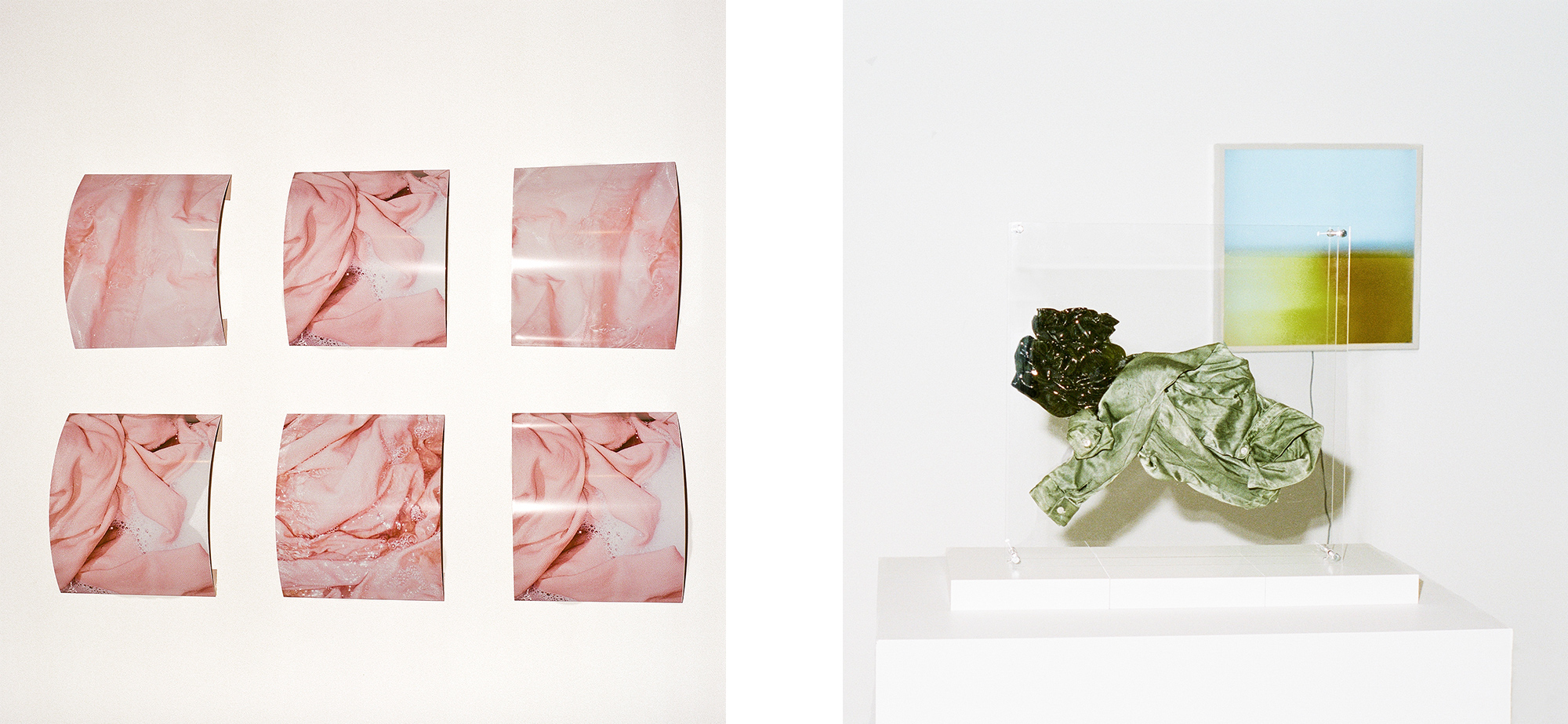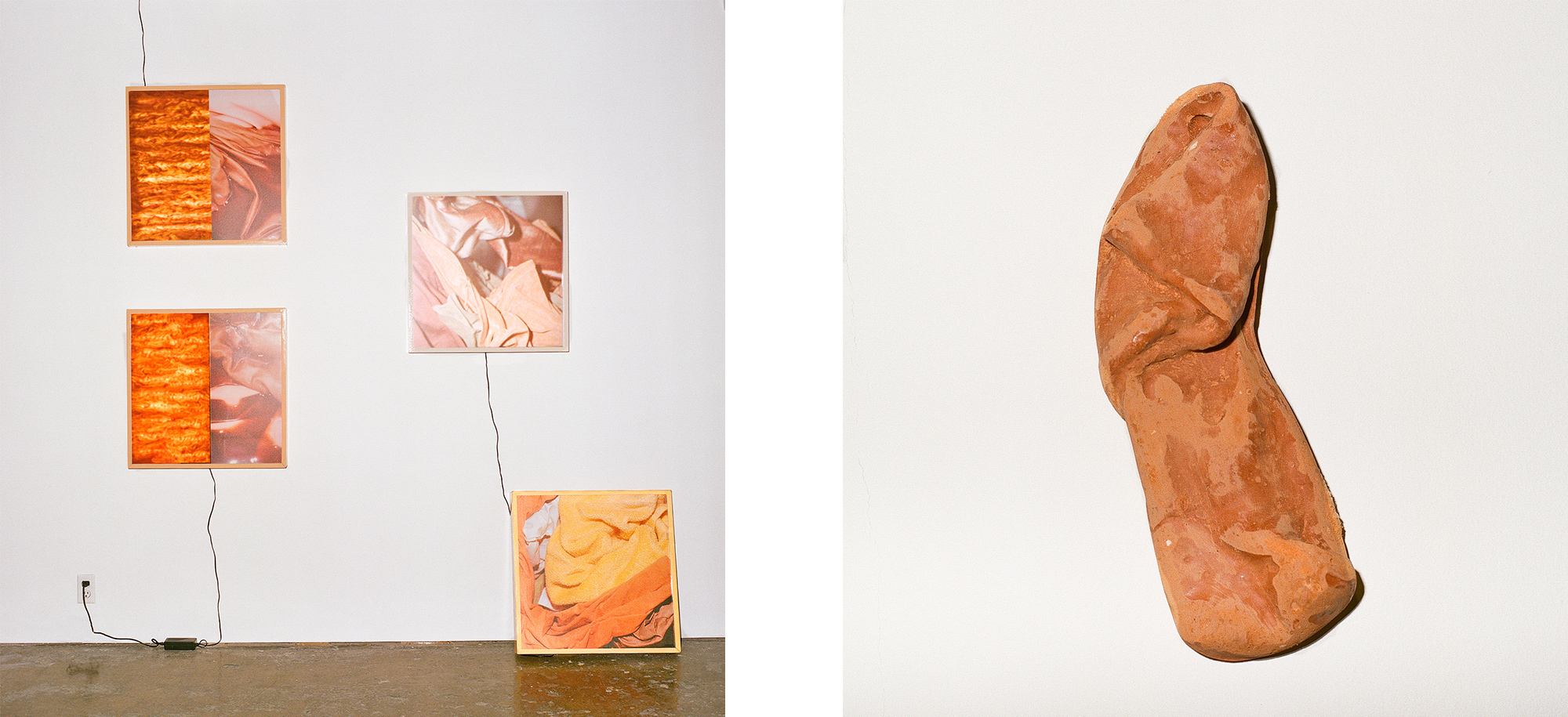Maya Fuhr’s Tec Style Meditates on the Lifespan and Environmental Impact of Clothing
Red carpets are often associated with an unattainable air of glamour — the kind only achievable through a professional “glam squad” and multiple layers of Spanx — and, if you’re someone who’s borrowed a designer gown and multi-million-dollar string of diamonds for the evening, one question: What are you wearing? But Maya Fuhr’s decision to choose a plush rouge runner to open Tec Style, her latest solo exhibition at Toronto’s 10 Years Ago Gallery, frames this question with a different intonation.
The rug, which bleeds from crimson to cherry to white, welcomes visitors into 10 Years’ industrial space, where light boxes, warped 3-D sculptures, and more rugs comprise what Fuhr describes as an exploration of a garment’s lifespan. Fuhr’s red carpet encourages visitors to think about the clothing they’re wearing as they enter the sparsely decorated room before being confronted with the time, work, and resources that went into the clothes’ creation.
“I’m giving you a tour of the manufacturing [process],” the Victoria-born artist and fashion photographer explains. “The steps of what your clothing went through to be on your body — all the way until it’s, hopefully, repurposed at the very end.”
Tec Style expands on Fuhr’s first exhibition, Malleable Privilege, which examined the ways in which fashion can do more harm than good. But while Malleable Privilege was, in Fuhr’s words, “more abstract and open to interpretation,” Tec Style bluntly addresses our rapid textile consumption. Photographs illuminated in light boxes illustrate the often toxin-laden dyeing process; aluminum prints capture nylon, velvet, and other fabrics bathed in soapy water and tumbling in the dryer; and a lone rust-hued sock, dipped in plaster to appear seemingly abandoned in sand, represent the end of many garments’ life cycle. “That’s sort of where the clothing ends up — disposed,” says Fuhr.

Despite the realities of fashion’s environmental impact — it’s estimated that the industry produces 20 per cent of global wastewater and 10 per cent of global carbon emissions — Tec Style isn’t all doom and gloom. There’s also a stained white silk shirt — displayed in photographs and on a velvet-and-cotton rug — which Fuhr dyed green using natural dyes to extend the garment’s life. “That’s all about repurposing and respecting and loving your old clothes,” she says.
Meanwhile, a pair of 3-D-printed caramel-coloured Chanel boots is a “wink” to the future, when widespread 3-D-printing technology could potentially reduce the amount of waste produced by brands. The waxy boots are a reproduction of the same ones Fuhr wore to Karl Lagerfeld’s Chanel last runway show in Paris earlier this year. “I didn’t want this exhibition to be preachy, like ‘Oh, you throw out your clothes and it goes straight to the landfill,’” says Fuhr. “That’s why I ended it with the repurposing of clothes and this 3-D boot, which looks to the future where we could be partially eliminating waste by being able to print on demand.”

And then there are the snakes — the ones that make up Tec Style’s Snake Room, where pythons are displayed in a video, on a large velvet runner and in a mock magazine spread, their bodies slithering in, out, and between a pair of snakeskin boots and an assortment of soft fabrics. Here, Fuhr offers a metaphor for the way we devour fashion: “How we throw out clothing and how we shed our clothes at the end of the day is kind of like a snake shedding its skin.”
“Instead of just buying things for the sake of buying things, really look at what you have in your closet,” she says, “and what relationship you have with what you already own.”
A portion of the proceeds from the exhibition, which runs until February 1st, are going towards My Clothes My World, a non-profit organization educating elementary and secondary school classrooms about the cycle of fashion.
________
Never miss a story. Sign up for NUVO’s weekly newsletter here.




